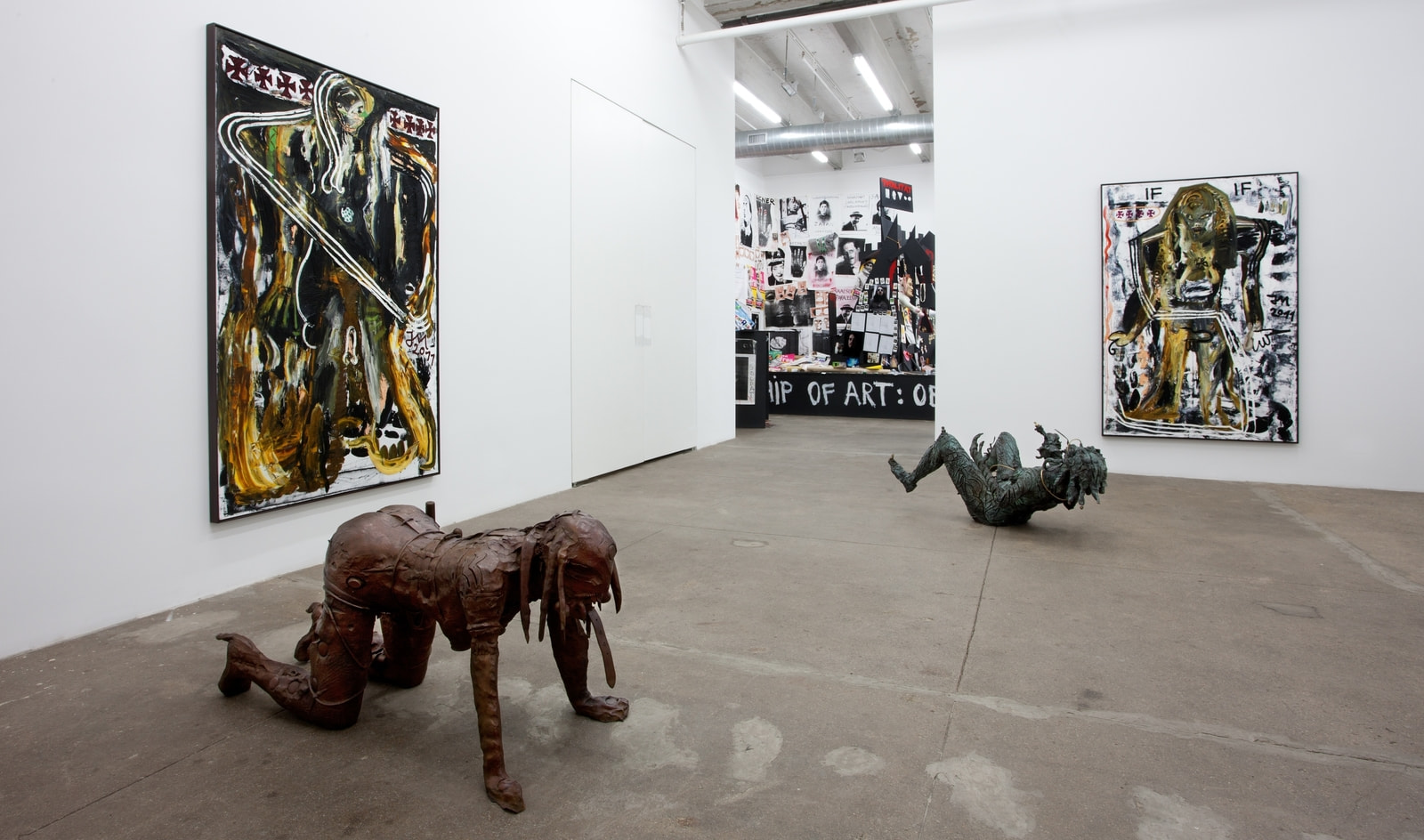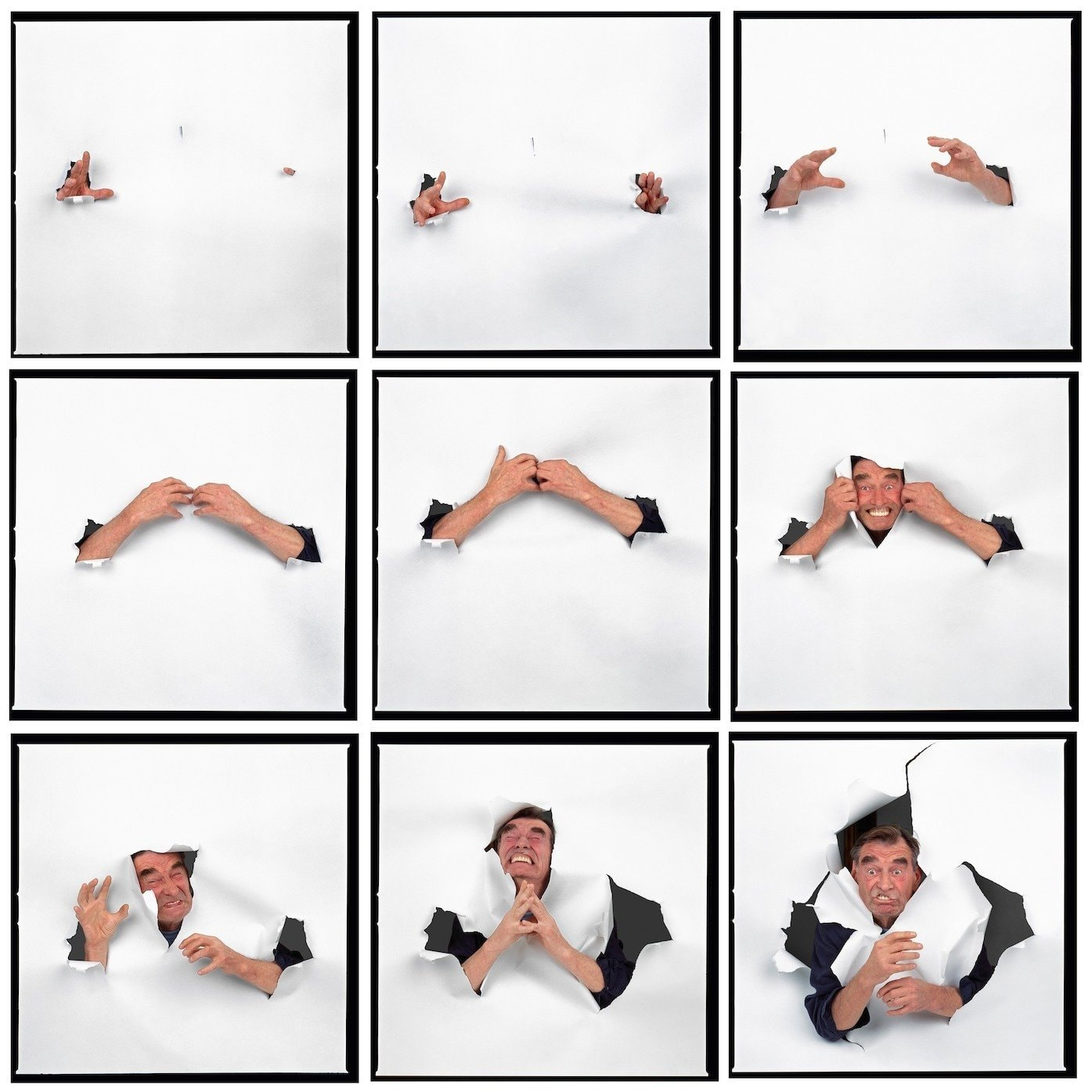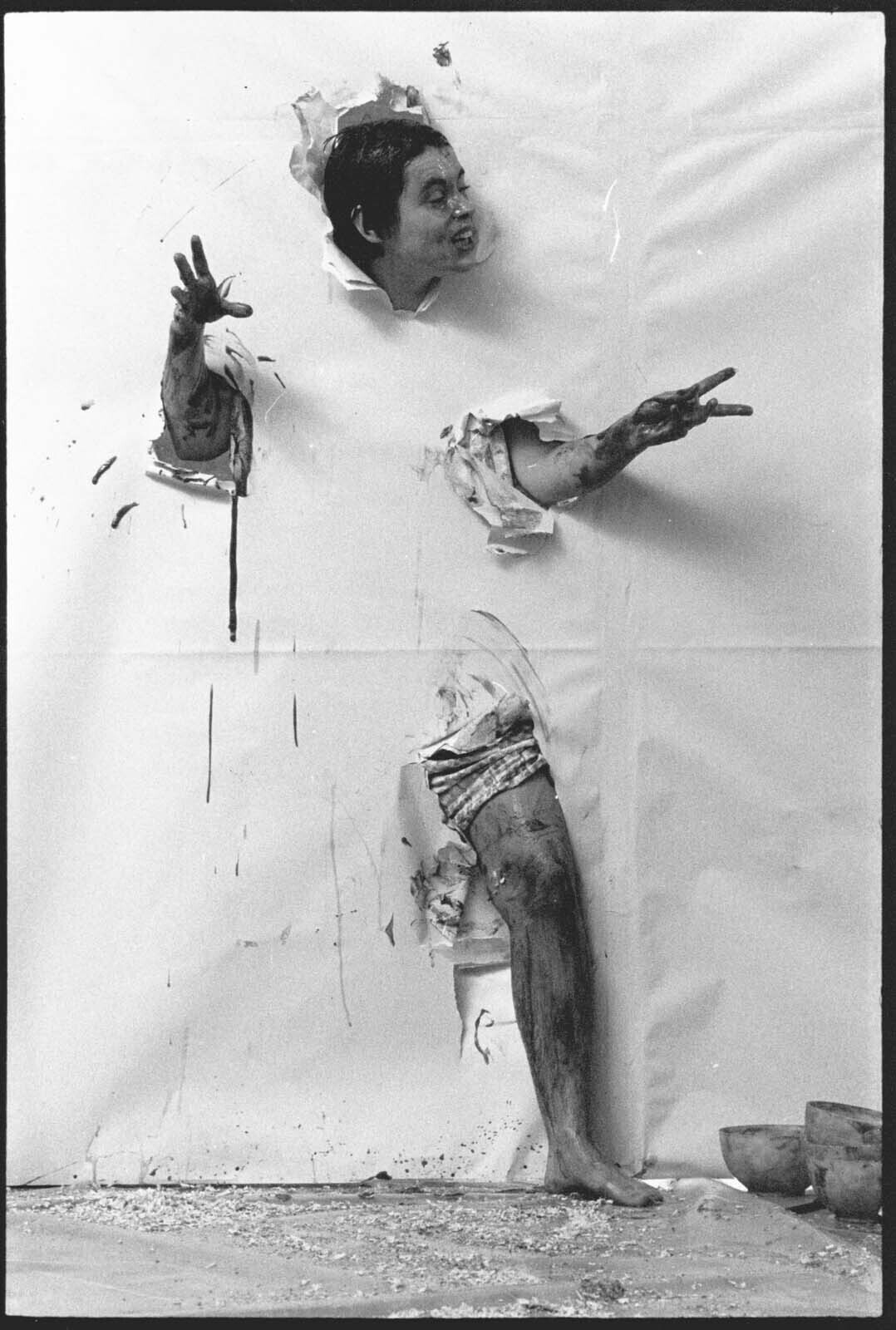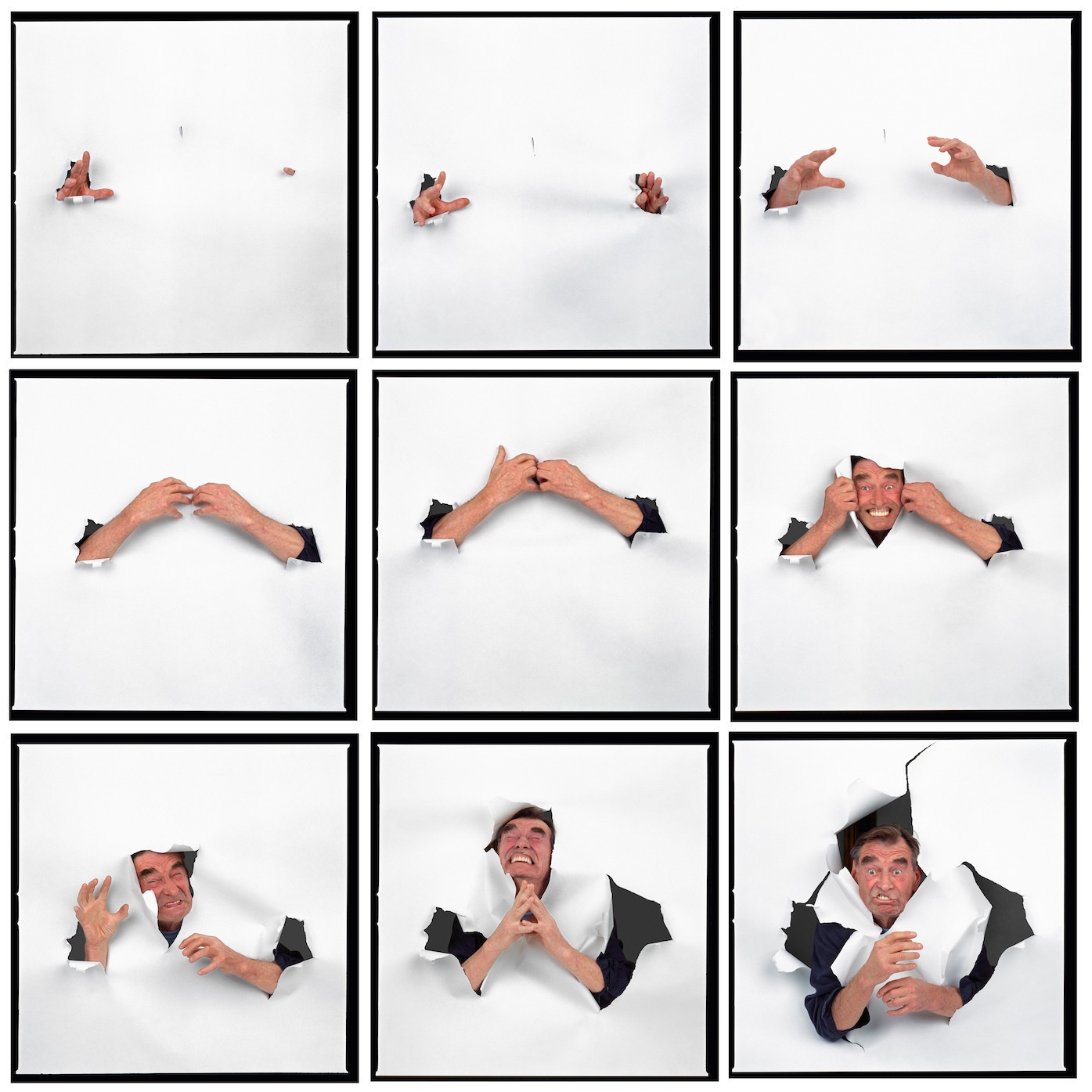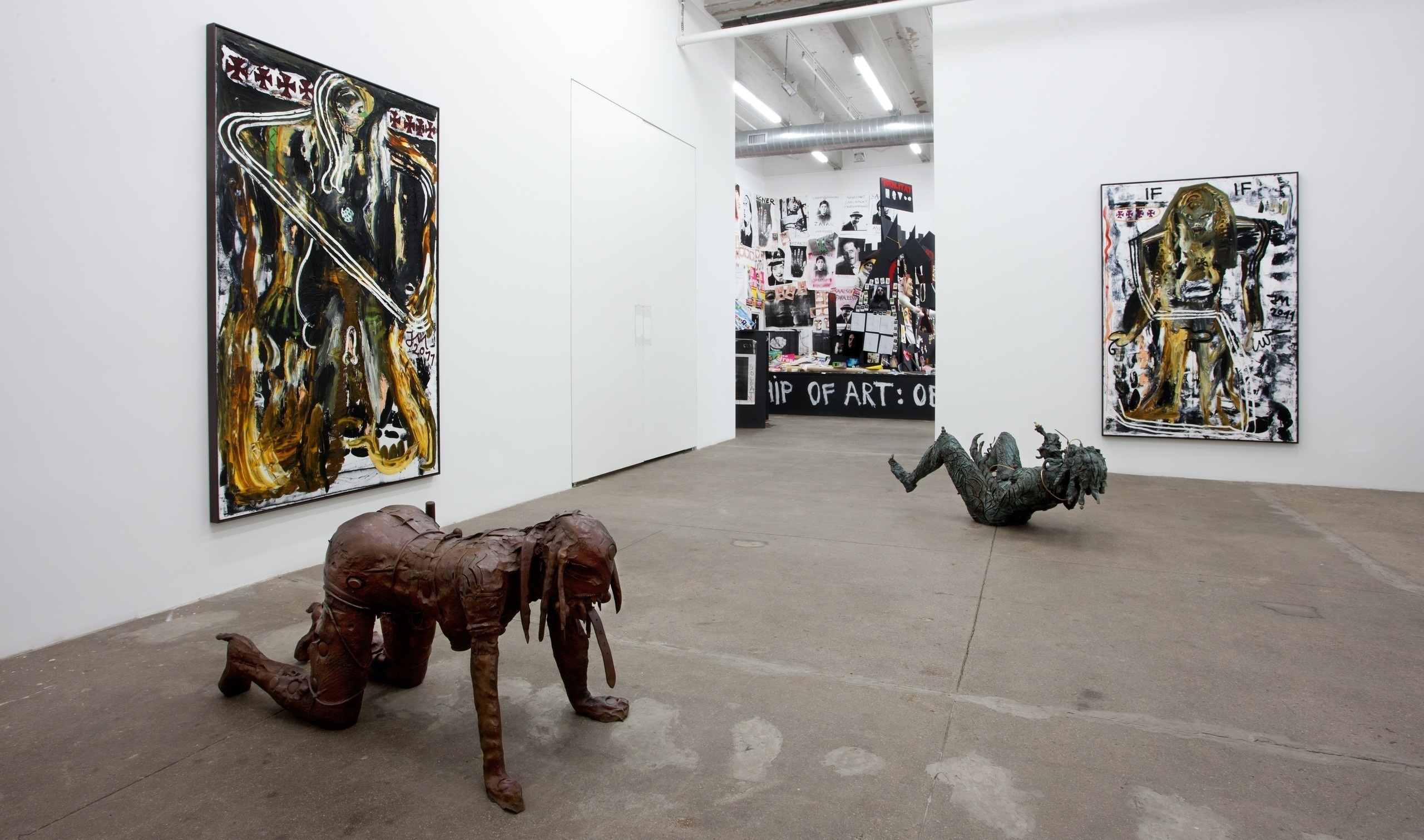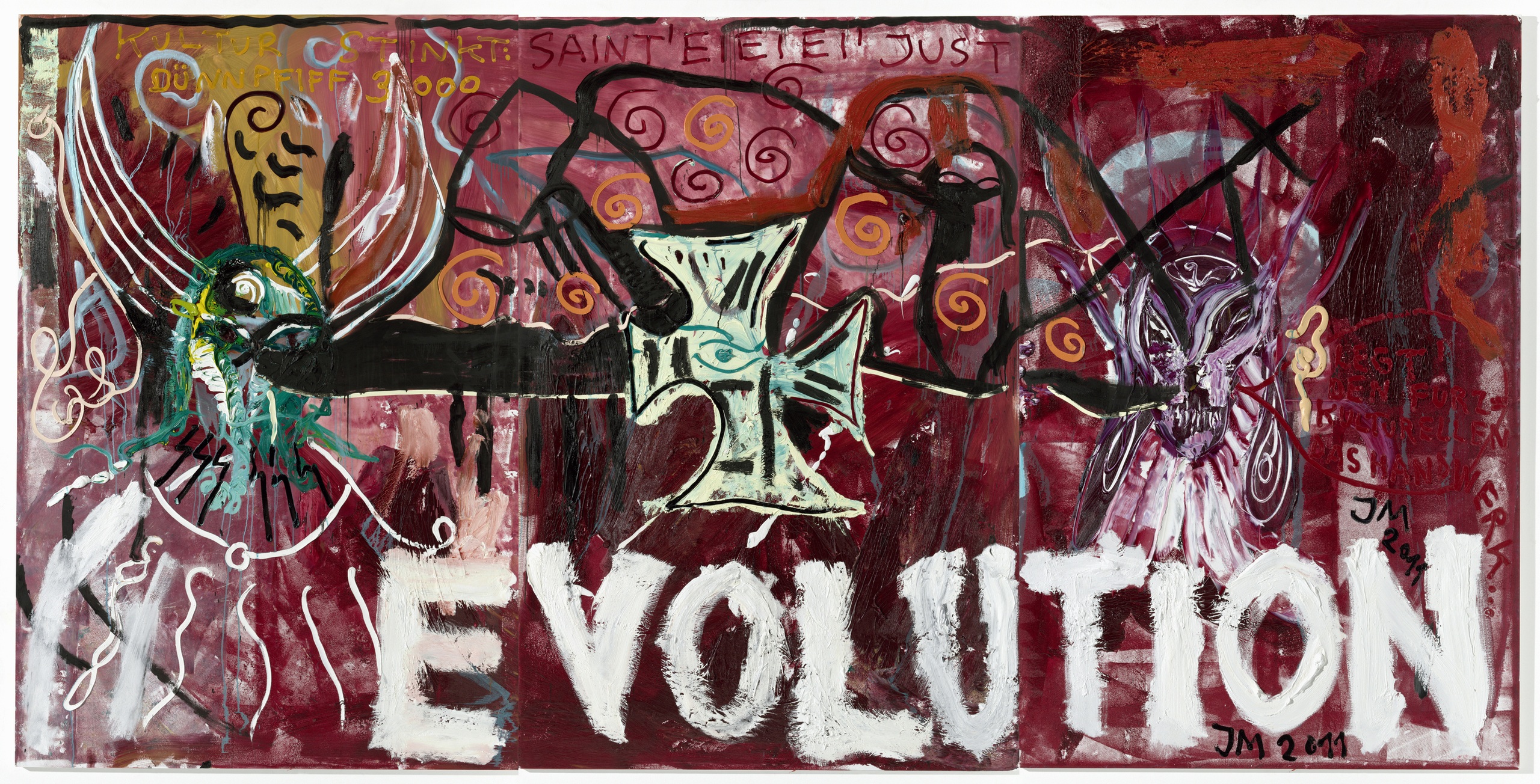The next two artists reveal equal interest in the radical leftist critique of society, rooted in the European art tradition that goes back to the Dadaists and German Expressionists of the early 20th century.
Otto Muehl (1925–2013) was one of the most radical figures of the postwar period. At the Academy of Fine Arts in Vienna, he received pedagogical training and taught art therapy for several years after graduation. However, upon meeting Hermann Nitsch and Günter Brus in the early 1960s, Muehl moved on to performance and actionism, using these mediums as forms of critique targeted at the bourgeois ideology. The climax of Viennese Actionism became the Art and Revolution happening (1968), resulting in Muehl’s first criminal conviction. Even more contradictory was his project of an experimental commune, whose members refused to live in accordance with the ideals of a capitalist society in favor of free love and collective labor and creativity. After more than 20 years, the Friedrichshof Commune ceased to exist in 1991, as its founder was convicted to seven years in prison. There, Muehl wrote a book of memoirs and continued to paint actively, just as he did in the years that followed his release in 1997 up until his death in 2013.
Jonathan Meese (b. 1970) is a contemporary German artist based in Ahrensberg and Berlin. Accumulating and transgressing diverse artistic traditions in his practice, from the avante-garde of the 1920s to postwar Actionism, street art, and even the heavy metal aesthetics, Meese is simultaneously hyperexpressionistic and ultra-ironic. In his flamboyant installations, sculptures, paintings, films and other media, he freely flirts with the still-tabooed—in common practice—themes of Nazism, sex, trash and punk cultures, and the like. At the same time, Meese’s works are saturated with postmodernist distance of sorts, balancing on the edge of good humor and acid mockery. He regularly collaborates with drama and opera theater companies as a stage designer. Also notable have been his projects initiated together with fellow German artists Daniel Richter, Albert Oehlen, Jörg Immendorf, and others.
